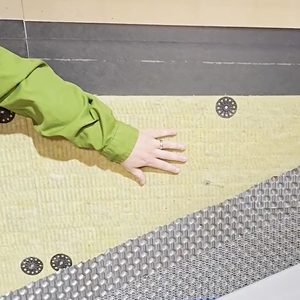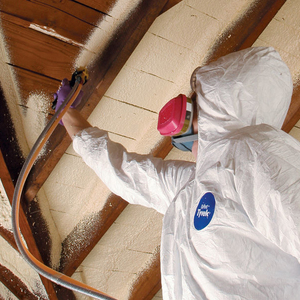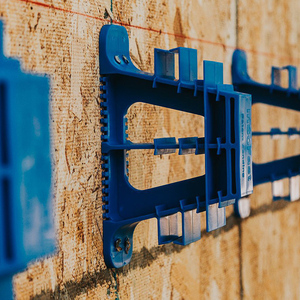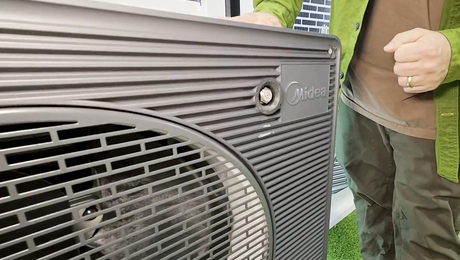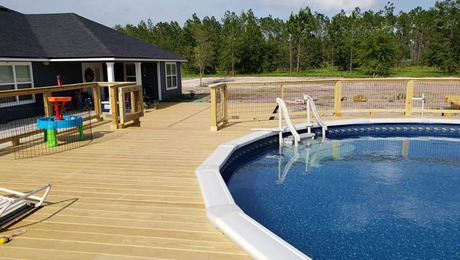Remodeling for Energy Efficiency
Can a 150-year-old house approach net-zero energy use? Three case studies point the way from the 19th to the 21st century.
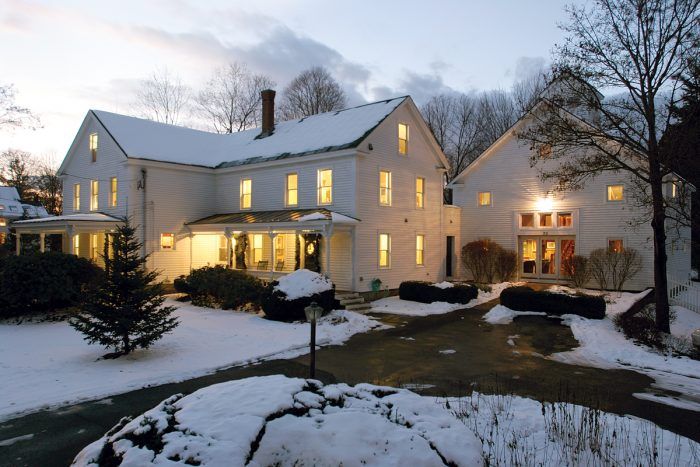
Synopsis: Building a new house with state-of-the-art energy-efficient techniques isn’t so hard to do. Remodeling an old house to make it energy smart is a much more difficult task, but it can be done. Building-science specialist Betsy Pettit offers insights on how to update an old house for energy efficiency based on lessons she learned in three projects she worked on, with the long-term goal of renovating for net-zero energy use. In addition to details for three case studies, this article includes sidebars on the seven steps to net-zero energy use and one about the amount of insulation a house needs.
In America, there are around 58 million houses that were built before the last energy crisis. Because these pre-1970s houses have little or no insulation, they are all ripe for energy-efficiency improvements. Houses eat up 20% of the energy used in this country and account for 21% of the carbon dioxide that contributes to global warming. This adds up to a huge opportunity.
America’s old houses can be made much tighter and can even approach net-zero energy use. Here, I’ll highlight three houses that my company, Building Science Corp., has renovated. Each house had different limitations and learning curves. I share one of the houses with my husband and business partner, Joe Lstiburek, and two of them have been used as our office space.
Renovating an old house is an expensive process. It’s also a delicate process because the end product must retain its charm. Most old houses are still around because people love their timeless form, floor plan, trim, details, and historical significance. Renovating an old house is a surprising and challenging process because many of them have undergone numerous renovations over the years. You never know exactly what you’ll find.
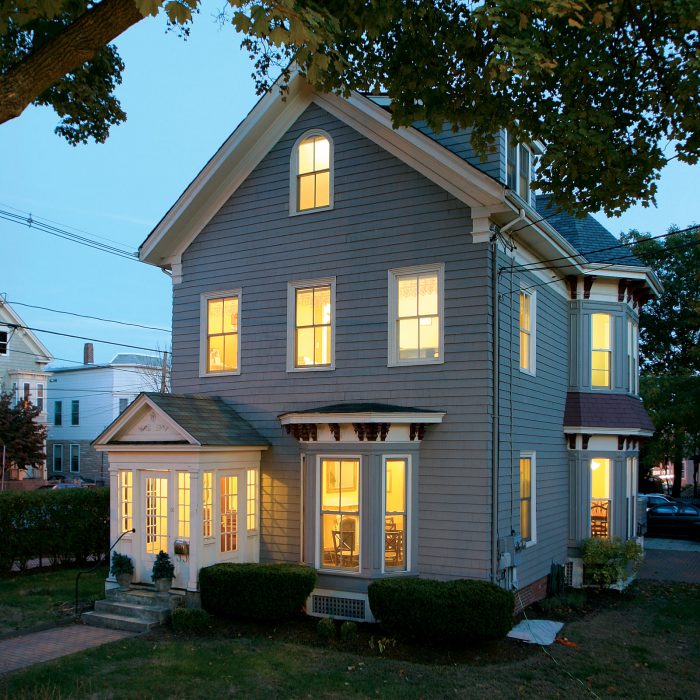
In old houses, most systems are at the end of their useful life
A hundred years can take its toll on infrastructure, and this is often the case with old houses. The water line from the street, electrical wiring, plumbing, mechanical systems—all are often nearing the end of their life. It would be foolish to renovate a house without replacing these basic systems. Windows often no longer function as intended, either. Their ventilation properties are hindered by layers of paint, or they simply became swollen shut years ago. If neglected, siding can need repair or replacement, too. And while the shape, floor plan, and details of an old house allow it to endure, people often think they need an addition to provide another bathroom, bedroom, office, or better views. Then they spend money building an addition, only to spend all their time in this new space because the rest of the house is uncomfortable. They don’t really get more space in this deal; they get a smaller space that’s comfortable.
Energy upgrades are cheaper than you think
While the cost of fixing wet basements and adding bathrooms can add up quickly, energy upgrades don’t have to put things out of reach. In fact, they don’t really cost that much more because they’re integral to the decisions and choices made in the renovation process.
If you consider a renovation as a whole system, you might find that you can add modern conveniences (such as an extra bathroom, bedroom, or office space) and comfort without building an addition, and reduce your energy costs in the process. The basement and attic are already built; you just need to use them. By adding rooms in the basement and attic, you often can reconfigure the floor plan to accommodate an extra bathroom, a larger kitchen, or a master suite.
Replacing the furnace, the boiler, or the HVAC system might cost $10,000 before you are done. But the upgrade could easily save $1000 a year in heating and cooling costs. Even in simple payback terms, this new system would pay for itself after ten years. Amortized into a 30-year mortgage, it costs $27 per month; the savings works out to $83 per month for a net gain of $56 per month. Because we know energy costs are rising, these numbers will only get better.
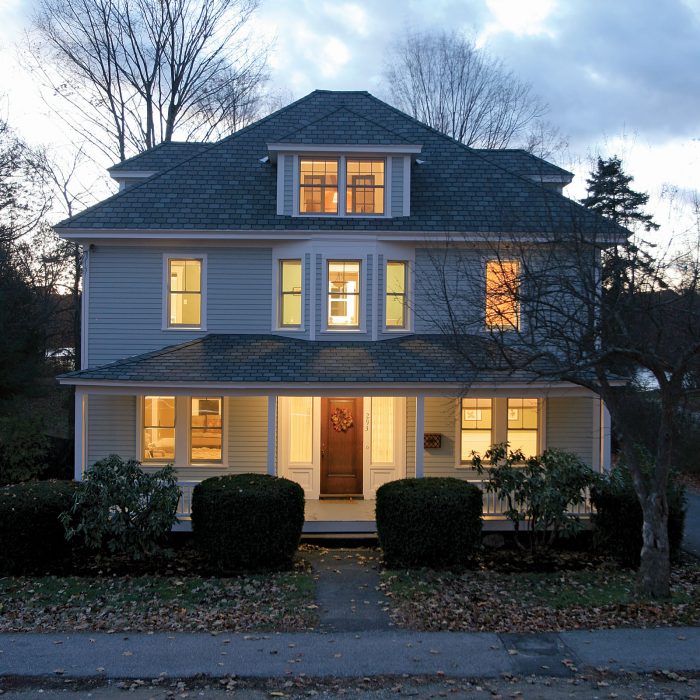
Case studies illustrate real-world challenges
The three homes featured here have several things in common. First, they are all more than 90 years old. Two of them were built in 1860 and the third in 1916. Second, they all had their major systems totally replaced: new wiring, light fixtures, plumbing, and mechanical systems, including the addition of central air-conditioning. Third, they all had attic spaces that were incorporated into the living space of the house by moving the insulation from over the second-floor ceiling to under the roof. Fourth, they all had insulation added under a new basement slab, as well as insulation applied to the inside of the exterior foundation wall. Fifth, they all had at least some windows replaced, and all had new window openings added in critical areas to provide better views of the yard and better daylighting to the home. Sixth, all the homes had bathrooms and bedrooms added. Finally, we replaced inefficient window A/C units with central A/C systems in each house.
Because of the work in the basements and attics, all the homes had increased living area without increasing the footprint of the home. And while the living space increased by 30% to 100%, all of them saw a reduction of energy use that ranged from 30% to more than 100%. While the renovations cost more than $100 per sq. ft. for each home, all were appraised at values exceeding that cost after the renovation was complete.
Some things are different in each case, too. The two oldest homes had major structural issues that needed to be repaired before other work could be done. Foundations needed to be rebuilt, and additional columns and beams were added for support. One house, the Greek revival, had frequent basement flooding that had to be stopped, and its attached barn was leaning enough to fall down. The Victorian was in a historic district, so even though the chimneys were structurally unsound and the old slate roof was beyond its useful service life, they had to be repaired (at a great cost) rather than replaced.
Durability and energy efficiency are intertwined
Making a flooded basement livable is a great example of how one type of repair is directly related to another. On one of these projects, we needed to stop water from leaking into the old rubble foundation with a perimeter drain and a new slab. Adding insulation under the slab and inside the walls keeps the space free of condensation and also saves energy.
The durability and functional upgrades illustrated in this article cost a lot. By spending a little more, we were able to reduce our energy costs tremendously. After cutting energy consumption, the stage is set for affordable site collection of renewable power to offset the remaining energy needs, which could bring these houses to net-zero energy use or even energy producers.
Betsy Pettit, FAIA, is an architect and a principal of Building Science Corp., now located in the Victorian house featured here. Photos by Daniel S. Morrison.
For more photos, drawings, and details, click the View PDF button below:
RELATED STORIES
- Magazine extra: Flashing Replacement Windows
- Energy-Efficient Houses
- Six Proven Ways to Build Energy-Smart Walls
- Home Energy-Efficiency Upgrades for Beginners
Fine Homebuilding Recommended Products
Fine Homebuilding receives a commission for items purchased through links on this site, including Amazon Associates and other affiliate advertising programs.

Nitrile Work Gloves

Disposable Suit

Insulation Knife



